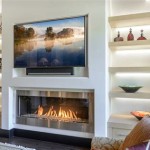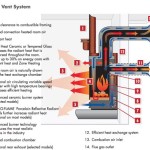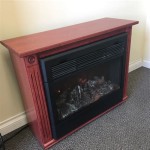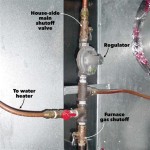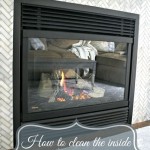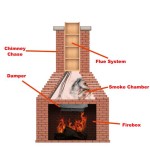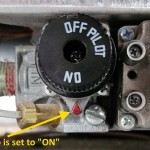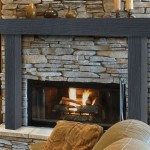Designing a Small Outdoor Kitchen with Fireplace: A Comprehensive Guide
Creating an outdoor kitchen can significantly enhance the usability and enjoyment of a backyard space. Combining an outdoor kitchen with a fireplace creates a focal point that extends the outdoor season, providing warmth and ambiance. However, designing such a space requires meticulous planning, especially when dealing with limited dimensions. This article will delve into the key considerations for designing a small outdoor kitchen with a fireplace, addressing factors such as layout, materials, appliances, safety, and integration with the surrounding landscape.
The feasibility of constructing a small outdoor kitchen with a fireplace depends heavily on the available space. Even a modest patio or deck can be transformed with careful planning. The first step involves accurately measuring the area and sketching a rough layout. This initial sketch should include the desired location of the kitchen components, such as the grill, countertop, sink, and storage, as well as the fireplace itself. Consider the existing structures, such as the house, fences, and landscaping, to ensure seamless integration.
One of the most critical aspects of designing any outdoor kitchen, especially a small one, is adhering to local building codes and regulations. These codes often dictate setbacks from property lines, requirements for fire-rated materials, and permitted fuel sources for both the kitchen appliances and the fireplace. Failure to comply with these regulations can result in costly delays or even the need to dismantle the entire structure. Contacting the local planning and building department early in the planning process is crucial.
The placement of the fireplace is paramount. It should be positioned to maximize its aesthetic appeal and functional benefits. Typically, a corner location is ideal, as it minimizes its footprint and provides a natural backdrop. Consider the prevailing wind direction when positioning the fireplace to minimize smoke blowing towards seating areas or the house. Allow sufficient clearance around the fireplace for safety and ease of movement.
Optimizing Space and Layout
In a small outdoor kitchen, every square inch matters. Strategic layout and efficient use of space are crucial for functionality and aesthetics. Consider a linear layout with the kitchen components arranged along a single wall. This design maximizes countertop space and allows for easy access to appliances and storage.
Vertical storage solutions can significantly increase storage capacity without consuming valuable floor space. Wall-mounted cabinets, shelves, and utensil racks help keep countertops clear and organized. Furthermore, consider utilizing the space beneath the countertop for storage. Built-in drawers and cabinets can house grilling tools, cookware, and other essentials.
Multi-functional appliances are essential in a small outdoor kitchen. Consider a grill with built-in side burners, a refrigerator with a built-in ice maker, or a sink with a cutting board insert. These features minimize the need for separate appliances and maximize countertop space. Integrated trash and recycling bins further contribute to a streamlined and efficient workspace.
Countertop selection significantly impacts both the functionality and aesthetics of the outdoor kitchen. Durable and weather-resistant materials such as granite, concrete, and stainless steel are ideal. Granite offers a timeless look and is resistant to heat, scratches, and stains. Concrete provides a modern, industrial aesthetic and can be customized with various colors and textures. Stainless steel is a practical and hygienic option, particularly for food preparation areas.
The selection of the fireplace design should complement the style of the outdoor kitchen and the surrounding landscape. Options range from traditional wood-burning fireplaces to modern gas-fueled models. Consider a prefabricated fireplace kit for ease of installation and cost-effectiveness. Alternatively, a custom-built fireplace allows for greater design flexibility and can be tailored to specific needs and preferences.
Material Selection and Durability
The outdoor environment presents unique challenges for material selection. Exposure to sunlight, rain, wind, and temperature fluctuations can degrade materials over time. Choosing durable and weather-resistant materials is essential for ensuring the longevity of the outdoor kitchen and fireplace.
For the kitchen structure, consider using materials such as treated lumber, concrete blocks, or stainless steel framing. Treated lumber is a cost-effective option, but it requires regular maintenance to prevent rot and decay. Concrete blocks provide a solid and durable foundation, but they can be labor-intensive to install. Stainless steel framing offers superior corrosion resistance and is ideal for coastal environments.
For the fireplace surround, consider using materials such as brick, stone, or stucco. Brick offers a classic and timeless look and is resistant to fire and weathering. Stone provides a natural and rustic aesthetic and can be sourced locally for a more sustainable option. Stucco is a versatile material that can be textured and colored to match the surrounding landscape.
When selecting appliances, prioritize models designed specifically for outdoor use. These appliances are built to withstand the elements and typically feature stainless steel construction and weather-resistant components. Look for grills with high-quality burners, refrigerators with efficient cooling systems, and sinks with durable faucets.
Consider using weather-resistant fabrics for outdoor furniture and cushions. Look for fabrics that are fade-resistant, water-repellent, and mildew-resistant. Outdoor rugs can add warmth and comfort to the space while also protecting the patio or deck from spills and stains.
Adequate lighting is crucial for creating a functional and inviting outdoor kitchen and fireplace area. Consider incorporating a combination of ambient lighting, task lighting, and accent lighting. Ambient lighting, such as string lights or lanterns, provides a soft and welcoming glow. Task lighting, such as under-cabinet lights or spotlights, illuminates work surfaces for food preparation and grilling. Accent lighting, such as spotlights or landscape lighting, highlights architectural features and landscaping elements.
Safety Considerations and Code Compliance
Safety is paramount when designing an outdoor kitchen with a fireplace. Adhering to safety guidelines and code requirements is essential for preventing accidents and ensuring the well-being of users.
Maintain a safe distance between the fireplace and combustible materials, such as wood fences, trees, and furniture. Consult local building codes for specific clearance requirements. Install a spark arrestor on the chimney of a wood-burning fireplace to prevent embers from escaping and potentially igniting nearby vegetation.
Ensure that the grill and other cooking appliances are properly ventilated. Avoid placing them under low overhangs or enclosed spaces. Install a carbon monoxide detector in the vicinity of the outdoor kitchen to detect dangerous levels of carbon monoxide gas.
Install a fire extinguisher in a readily accessible location. Ensure that all users are familiar with its operation. Develop a fire safety plan that includes evacuation routes and emergency contact information.
When using propane or natural gas for cooking appliances or fireplaces, ensure that the gas lines are properly installed and inspected by a qualified professional. Use gas detectors to detect leaks. Store propane tanks in a well-ventilated area away from heat sources and open flames.
Ensure that the outdoor kitchen area is adequately illuminated to prevent tripping hazards. Install non-slip surfaces around the cooking area and fireplace. Keep the area free of clutter and debris.
The integration of the outdoor kitchen and fireplace with the surrounding landscape can significantly enhance the overall aesthetic appeal. Consider incorporating elements such as plants, trees, and water features to create a cohesive and inviting outdoor space.
Planting drought-tolerant plants around the outdoor kitchen can add color and texture while also minimizing the need for watering. Consider using planters or raised beds to define the space and add visual interest. Trees can provide shade and privacy while also creating a natural backdrop for the outdoor kitchen and fireplace.
Water features, such as fountains or ponds, can add a sense of tranquility and relaxation to the outdoor space. Consider incorporating a small waterfall or stream that complements the natural landscape. A well-designed outdoor kitchen with a fireplace can transform a backyard into a functional and aesthetically pleasing outdoor living space. By carefully considering the layout, materials, appliances, safety, and integration with the surrounding landscape, it is possible to create a small outdoor kitchen that is both practical and enjoyable.

Outdoor Fireplace Kits Kitchens Belgard

Outdoor Kitchens Artistic Landscapes

Outdoor Kitchen Ideas For Better Backyard Living Southwest Stone Supply

20 Interesting Backyard Designs With Pool And Outdoor Kitchen Patio Decor Fireplace Design Layout

Outdoor Kitchen Designs Featuring Ovens Fireplaces And Other Cool Accessories

70 Awesomely Clever Ideas For Outdoor Kitchen Designs Patio Exterior Fireplace Design

Outdoor Fireplace Kits Kitchens Belgard

What To Know About Adding An Outdoor Kitchen

70 Awesomely Clever Ideas For Outdoor Kitchen Designs

6 Elegant Outdoor Bbq Ideas
Related Posts

